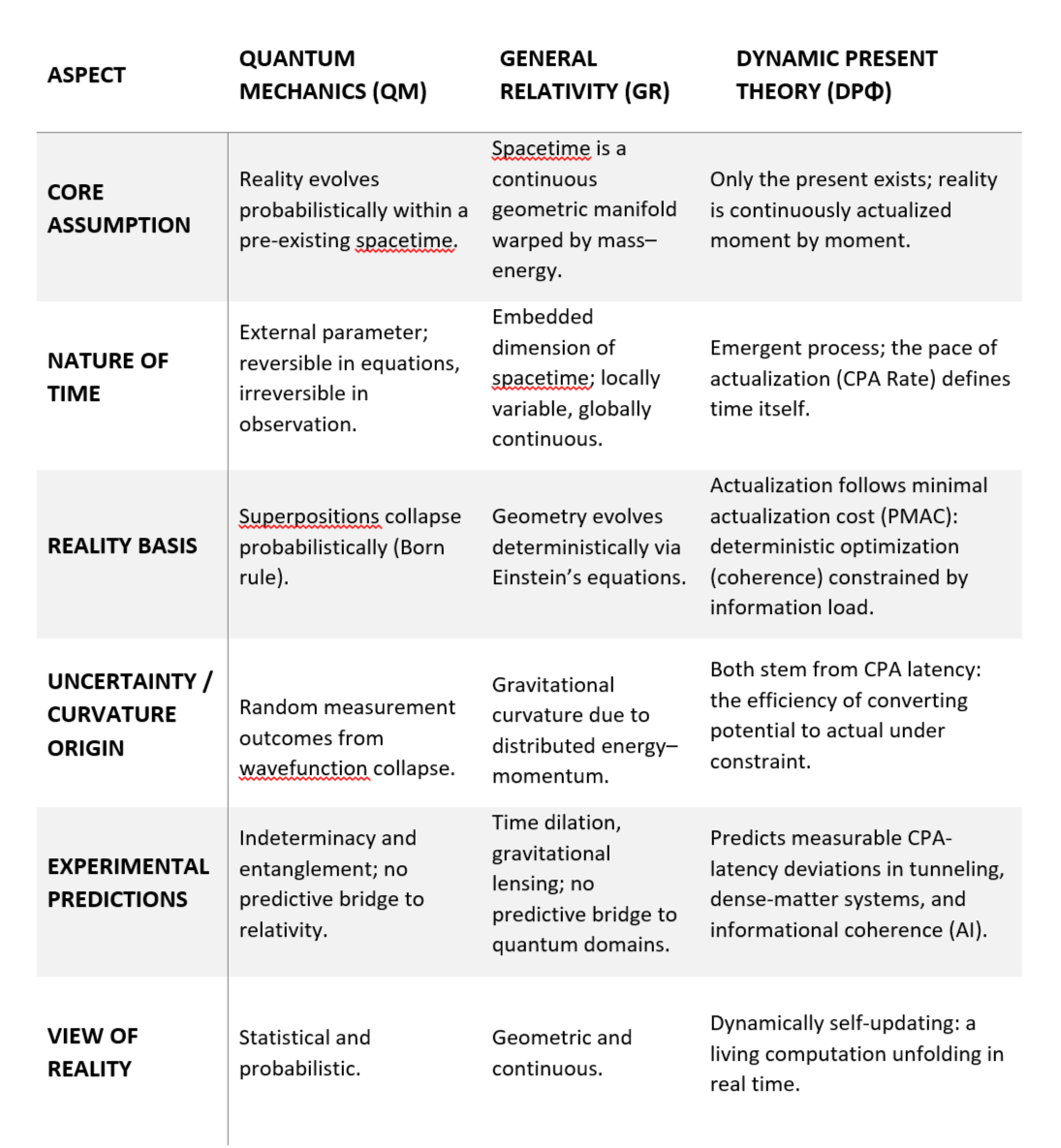How Dynamic Present Theory Differs from Standard Physics
Dynamic Present Theory (DPΦ) reframes physics around a single principle: the present is the only physically realized state. All phenomena, from quantum randomness, relativistic time dilation, to even emergent intelligence, arise from how efficiently potential information becomes actualized energy.
Where quantum mechanics and general relativity describe what happens in the universe, DPΦ describes how existence happens at all.
Its advantage lies in unification through falsifiability: DPΦ doesn’t add unseen dimensions or hidden variables. It measures the rate of reality’s renewal, observable in matter, and the method of that renewal, detectable in information systems.
Falsifiability & Experimental Tests
Dynamic Present Theory (DPΦ) stands on a single claim:
Continuous Present Actualization (CPA), the ever-changing “forever now,” is a real, measurable process. If this is true, the universe should reveal CPA’s signature, coherence rising under constraint, in any system that pushes the limits of actualization, from atomic tunneling to AI reasoning.
Why These Matter
Each domain — information, matter, quantum — tests CPA from a different angle. If the same coherence-under-constraint pattern appears across all three, the result transcends coincidence: it would demonstrate a single actualization law shaping both computation and cosmos.
In short: DPΦ can be right or wrong …and we’re measuring which.
